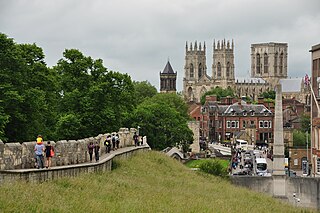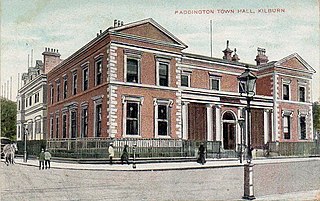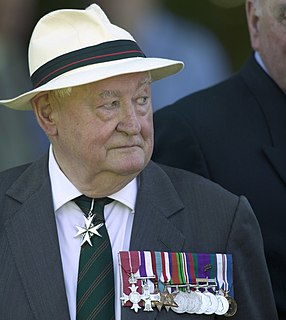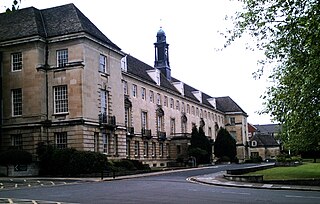
The mayor of London is the chief executive of the Greater London Authority. The role was created in 2000 after the Greater London devolution referendum in 1998, and was the first directly elected mayor in the United Kingdom.

The Greater London Authority (GLA), colloquially known by the metonym "City Hall", is the devolved regional governance body of Greater London, which is coterminous with the region of London and consists of the City of London and the ceremonial county also named Greater London. It consists of two political branches: the executive Mayoralty and the 25-member London Assembly, which serves as a means of checks and balances on the former. Since May 2016, both branches have been under the control of the London Labour Party. The authority was established in 2000, following a local referendum, and derives most of its powers from the Greater London Authority Act 1999 and the Greater London Authority Act 2007.

The Greater London Council (GLC) was the top-tier local government administrative body for Greater London from 1965 to 1986. It replaced the earlier London County Council (LCC) which had covered a much smaller area. The GLC was dissolved in 1986 by the Local Government Act 1985 and its powers were devolved to the London boroughs and other entities. A new administrative body, known as the Greater London Authority (GLA), was established in 2000.

City status in the United Kingdom is granted by the monarch of the United Kingdom to a select group of communities. As of 1 March 2022, there are 70 cities in the United Kingdom—52 in England, 6 in Wales, 7 in Scotland, and 5 in Northern Ireland. Although it carries no special rights, the status of city can be a marker of prestige and confer local pride.

The Inner London Education Authority (ILEA) was an ad hoc local education authority for the City of London and the 12 Inner London boroughs from 1965 until its abolition in 1990. The authority was reconstituted as a directly elected body corporate on 1 April 1986.

London County Council (LCC) was the principal local government body for the County of London throughout its existence from 1889 to 1965, and the first London-wide general municipal authority to be directly elected. It covered the area today known as Inner London and was replaced by the Greater London Council. The LCC was the largest, most significant and most ambitious English municipal authority of its day.

Paddington was a civil parish and metropolitan borough in London, England. It was an ancient parish in the county of Middlesex, governed by an administrative vestry. The parish was included in the area of responsibility of the Metropolitan Board of Works in 1855 and became part of the County of London in 1889. The parish of Paddington became a metropolitan borough in 1900, following the London Government Act 1899, with the parish vestry replaced by a borough council. In 1965 the borough was abolished and its former area became part of the City of Westminster in Greater London.

Field Marshal Edwin Noel Westby Bramall, Baron Bramall, was a British Army officer. He served as Chief of the General Staff, the professional head of the British Army, between 1979 and 1982, and as Chief of the Defence Staff, professional head of the British Armed Forces, from 1982 to 1985.
Local education authorities (LEAs) are the local councils in England and Wales that are responsible for education within their jurisdiction. The term is used to identify which council is locally responsible for education in a system with several layers of local government. Local education authorities are not usually ad hoc or standalone authorities, although the former Inner London Education Authority was one example of this.

Wiltshire County Council was the county council of Wiltshire in the South West of England, an elected local Government body responsible for most local government services in the county.

The Lord-Lieutenant of Greater London is the personal representative of the monarch, currently Queen Elizabeth II, in Greater London.
Liverpool City Council has existed since 1880, when Liverpool was awarded city status. Prior to this date the local authority was a town council.
Borough status is granted by royal charter to local government districts in England, Wales and Northern Ireland. The status is purely honorary, and does not give any additional powers to the council or inhabitants of the district. In Scotland, similarly chartered communities were known as royal burghs, although the status is no longer granted.

An election to the County Council of London took place on 5 March 1913. It was the ninth triennial election of the whole Council. The size of the council was 118 councillors and 19 aldermen. The councillors were elected for electoral divisions corresponding to the parliamentary constituencies that had been created by the Representation of the People Act 1884. There were 57 dual member constituencies and one four member constituency. The council was elected by First Past the Post with each elector having two votes in the dual member seats. Unlike for parliamentary elections, women qualified as electors for these elections on exactly the same basis as men. Women were also permitted to stand as candidates for election.

Greater London is an administrative area in England governed by the Greater London Authority, and a ceremonial county that covers the bulk of the same area, with the exception of the City of London, which forms a separate ceremonial county. The administrative area, which has the same extent as the region of London, is organised into 33 local government districts: the 32 London boroughs and the City of London. The Greater London Authority, based in Newham as of the start of 2022, is responsible for strategic local government across the area and consists of the Mayor of London and the London Assembly.












